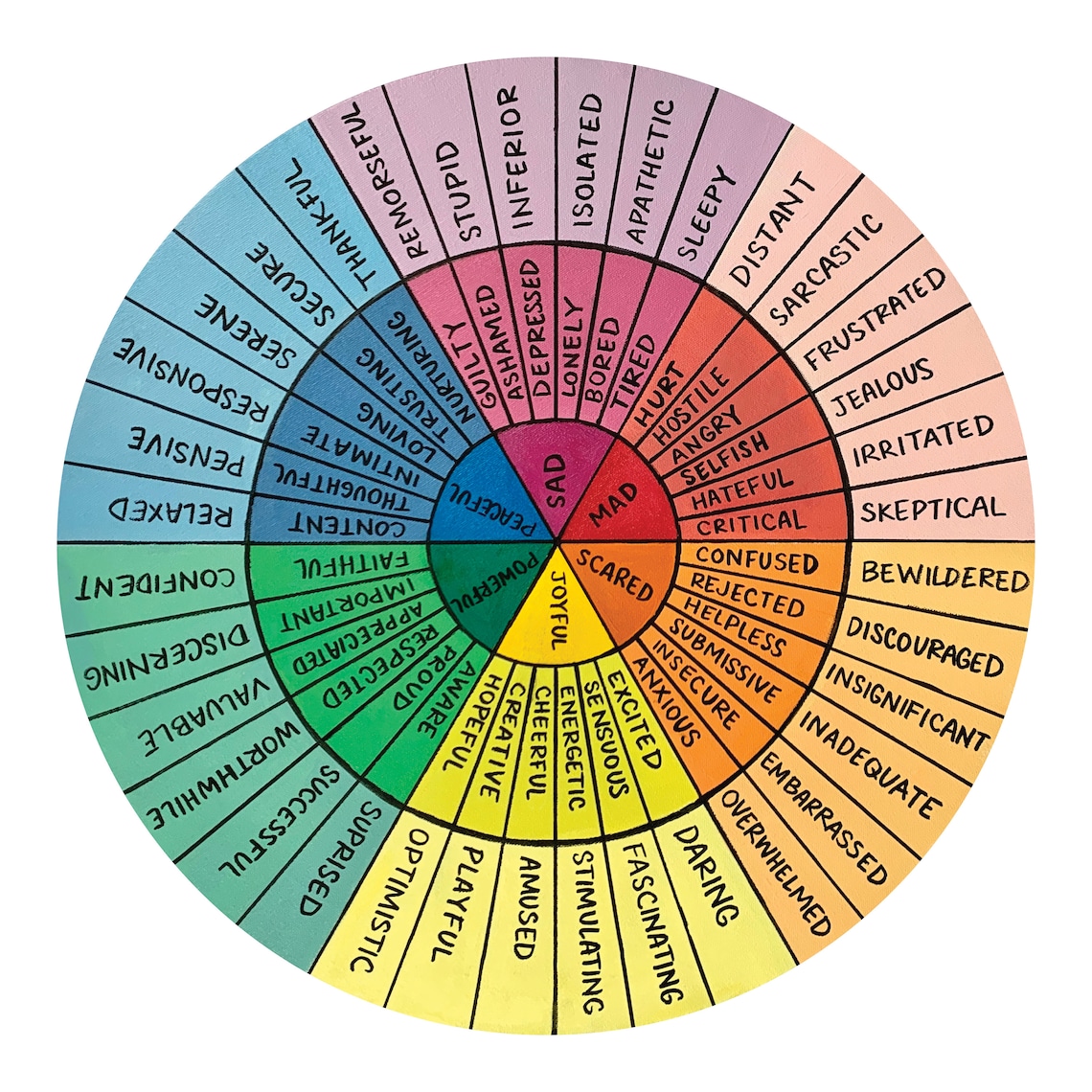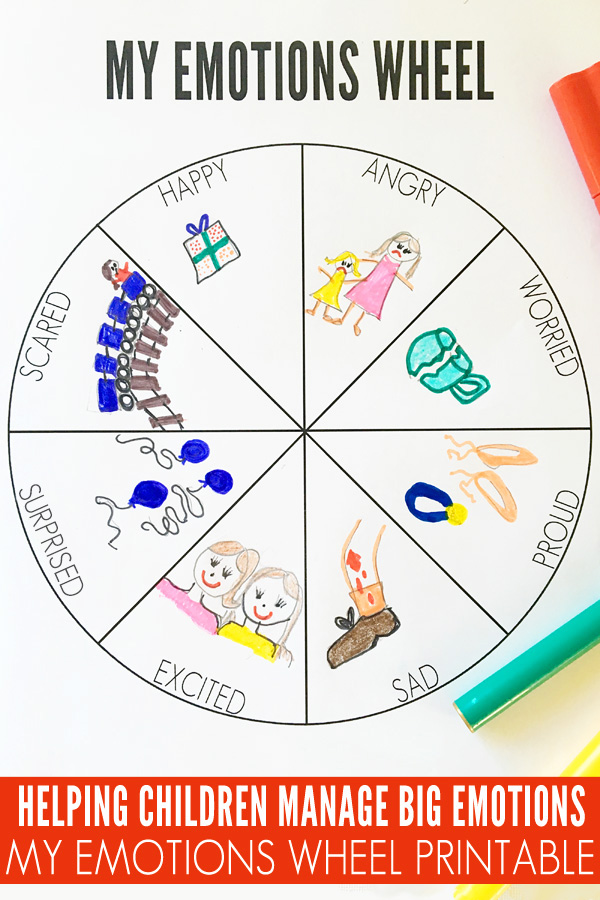


This can offer insight into other emotions the client is experiencing but may not have identified. Note: For adult clients, it can also be helpful for them to read through the emotions listed in other trajectories. Then time is spent processing the identified emotions. They list as many as they feel truly fit what they are experiencing.

Then the client peruses the primary emotions listed in the “triangle,” or trajectory, for that emotion. These are the easiest for most people to connect with. When using this tool in therapy (with children and adults), the client is asked to identify one of the six secondary emotions that they are feeling (the six closest to the middle of the circle). The outer layers in each trajectory represent the primary emotions associated with each secondary emotion. While they are easiest to identify and label, they are secondary to what a person actually may be experiencing (e.g., I know I’m feeling angry, but I’m actually hurt). The six inner emotions – Sad, Angry, Afraid, Peaceful, Powerful, Joyful – represent the emotions that are most easily identified. The FW is then split into six color-coded triangles (three on the top and three on the bottom). The top half of the FW identifies more negative emotions and the bottom half, more positive emotions. The Feeling Wheel (FW) is a beneficial tool to use when working on emotional efficacy. Once a person has a clear understanding of what he or she is feeling, they can deal with it more effectively. Improving emotional expression can be extremely helpful, for both the child and the parent. But their behavior may actually be a response to feeling hurt or judged.

For example, your child stomps their feet, storms off and slams their bedroom door. Children, especially, tend to have a hard time labeling and understanding what they are truly feeling. In therapy, helping a client learn appropriate emotional expression can be tricky.


 0 kommentar(er)
0 kommentar(er)
